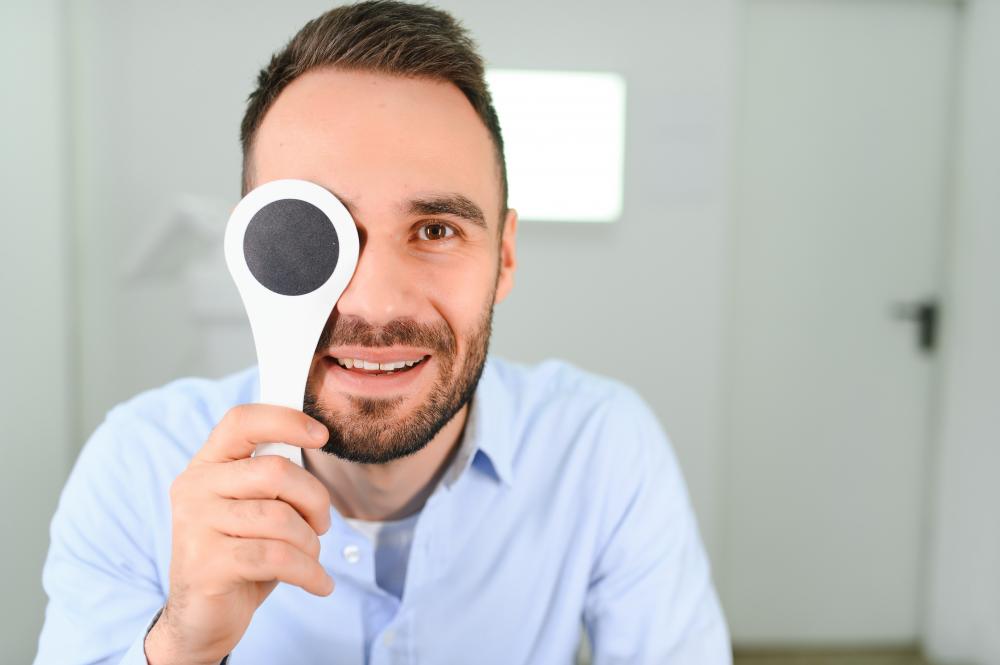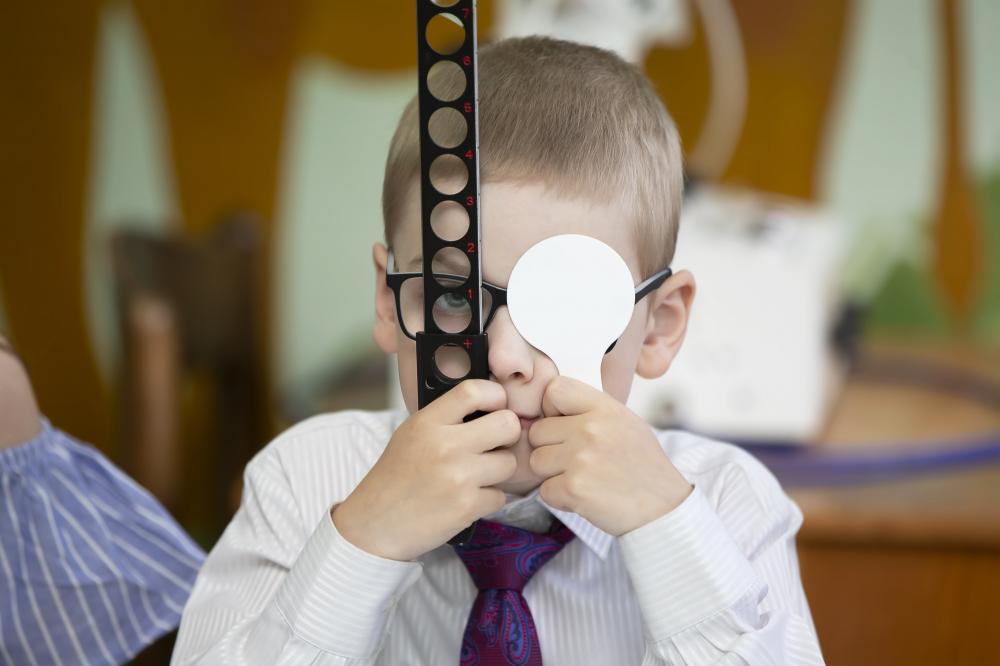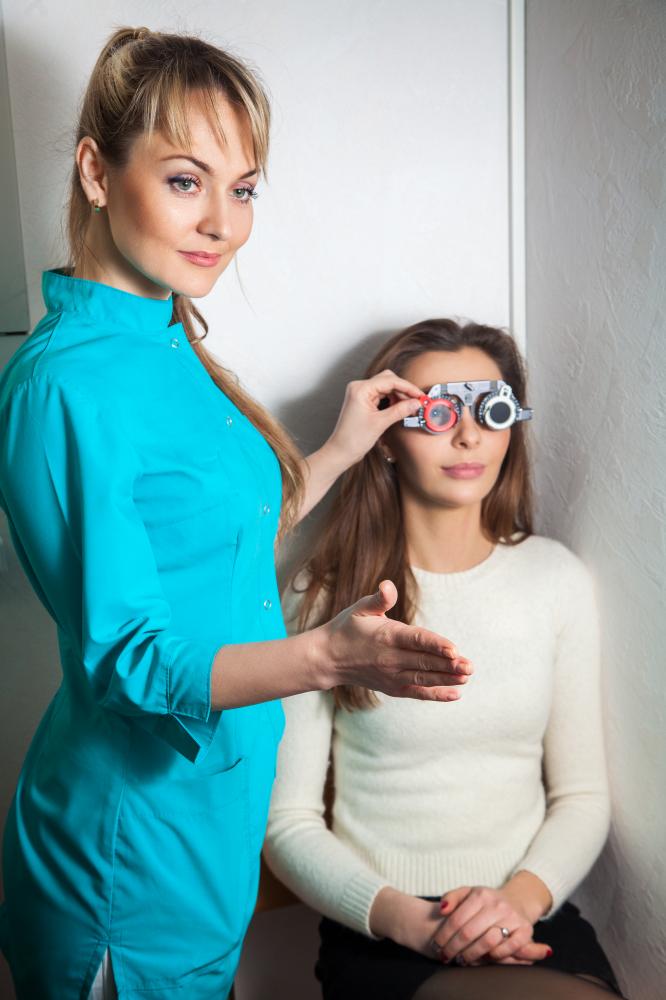Table of Contents
Unlocking the Potential of Vision Therapy for Lazy Eye

In my years of working within the optical industry, the strides we’ve made in vision therapy for lazy eye have been nothing short of revolutionary. As a part of Fresnel Prism, I’ve seen firsthand how tailored optical solutions can transform lives, bringing clarity and depth back into the world that some have never fully experienced.
Decoding Lazy Eye: Understanding Amblyopia
Amblyopia, often termed ‘lazy eye,’ affects numerous individuals, causing a unilateral reduction in vision that conventional glasses cannot typically rectify. It emerges in childhood when neural pathways from one eye to the brain aren’t sufficiently stimulated, leading to a developmental lag in vision.
Affected individuals may find one eye drifting or that they subconsciously favor the other eye. The key to addressing this condition is early detection and intervention. If neglected, the neural pathways could mature inadequately, hampering vision permanently.
Illuminating the Path: What is Vision Therapy for Lazy Eye?
The concept of vision therapy for lazy eye is akin to physical therapy but for the eyes and brain. It is a highly specialized form of treatment aiming to strengthen the mind-eye connection.
I’ve seen with my own eyes how exercises and tasks, tailored to the patient’s specific needs, can significantly enhance visual skills. Such therapy is not only about improving the eye’s focusing abilities but also about enhancing the brain’s ability to control eye alignment, eye tracking, and eye teaming.
Essential Components of Vision Therapy
Typical therapy sessions include the use of prisms, lens filters, computer-assisted visual activities, and dedicated exercises that aim to develop and reinforce the visual skills necessary for effective vision. Treatment plans are highly individualized–what works for one person may not suit another, requiring a bespoke approach each time.
There are exercises designed to help the brain acknowledge the weaker eye, encouraging it to utilize both eyes together, effectively correcting the lazy eye. These exercises can be performed both in-office with trained professionals and at home with guided routines.
Setting Sights High: Goals of Vision Therapy
The ultimate goal of vision therapy for lazy eye is to ensure that the affected eye not only sees clearly but works in harmony with the stronger eye. This entails perfecting binocular vision, depth perception, and refining the visual system’s ability to accurately interpret the world around it.
Benefits Beyond Vision: The Far-Reaching Impact
Much like any other form of therapy, the benefits of vision therapy for lazy eye extend beyond the immediate, tangible results. Patients often report improved academic performance, better coordination in sports, and a newfound confidence in their daily lives.
There’s something indescribably powerful about witnessing someone see in three dimensions for the first time. It’s like watching them discover a new layer of reality, one that was always present but out of reach until that moment.
Personal Insights: The Human Element in Treatment
My experience with patients has reinforced the idea that every individual’s journey with vision therapy for lazy eye is unique. There’s no one-size-fits-all solution. For some, progress is swift and measurable within weeks, while for others, the commitment extends over months, with improvements emerging gradually.
Yet, the resilience and determination I’ve seen in our patients, especially young children, is awe-inspiring. They tackle each session’s challenges with a spirited tenacity, often turning what could be a tedious process into an adventure of self-discovery.
Celebrating Success: Stories of Triumph
Among the many success stories, one particularly resonates with me. A young girl, initially withdrawn due to her poor vision, blossomed into a vivacious soccer player following a year of vision therapy for lazy eye. Her mother’s tearful gratitude remains etched in my memory, reminding me of the profound difference our work makes.
Overcoming Obstacles: Challenges and Solutions in Vision Therapy
While the path of vision therapy for lazy eye is ripe with success, it’s not without its hurdles. Compliance with therapy can be a significant challenge, especially when it comes to in-home exercises. It’s pivotal for caretakers to grasp the importance of these exercises and to create a supportive environment that encourages consistency.
At Fresnel Prism, we understand these difficulties and offer innovative solutions such as engaging digital platforms and games that make therapy sessions more interactive and enjoyable for our younger clients. By turning therapy into a game, we’ve witnessed higher adherence and improved outcomes.

Anecdotal evidence also suggests that adults with amblyopia benefit from persistence in therapy. Although traditionally considered less responsive beyond a certain age, adults too can experience marked improvements with tailored programs.
Embracing Technology: A New Frontier in Vision Therapy
Advancements in virtual reality and software development have opened up new frontiers in vision therapy for lazy eye. These technologies create immersive and adaptive environments for patients, offering a level of engagement that was previously unattainable.
At our facilities, we’re exploring these cutting-edge options to supplement traditional methods, constantly seeking ways to enhance the effectiveness and enjoyment of therapy sessions. The potential for breakthroughs in patient engagement and treatment efficacy is boundless.
A Holistic Approach: Vision Therapy as Part of Comprehensive Care
Vision therapy for lazy eye is not a standalone cure but an integral part of a comprehensive care plan. It often works in tandem with other treatments such as corrective lenses or surgery, depending on the underlying cause of amblyopia.
Our approach at Fresnel Prism always considers the patient’s overall well-being, aiming to not only improve vision but enhance their quality of life. This involves working closely with other healthcare providers to ensure a synchronized and holistic treatment strategy.
In one case, combining vision therapy with specially designed prism lenses resulted in dramatic improvements for a patient who had struggled with depth perception. This synergy between different treatment modes epitomizes our philosophy of integrated, patient-centered care.
Looking Forward: The Bright Future of Vision Therapy
The field of vision therapy for lazy eye is continually evolving, with ongoing research enriching our understanding and refining our techniques. The narrative of ‘it’s too late for treatment’ is being rewritten, replaced by a message of hope and possibility.
As part of a forward-thinking optical solutions provider, I’m proud to say that at Fresnel Prism, we’re committed to staying at the forefront of this exciting field. By embracing innovation and individualized care, we’re not just correcting vision; we’re transforming lives, one eye at a time.
For those embarking on the journey of vision therapy for lazy eye, know that the path may be challenging, but the rewards are life-changing. With determination and the right support, the world will become clearer, sharper, and infinitely more vibrant.

Does vision therapy for lazy eye work?
At Fresnel Prism, we’ve witnessed countless success stories that affirm the effectiveness of vision therapy for those with lazy eye, or amblyopia. It’s a process that has been scientifically validated through numerous studies. This form of therapy leverages the brain’s remarkable ability to change and adapt, known as neuroplasticity, to improve visual function. While the outcomes can vary depending on factors such as age and the extent of the condition, many of our patients experience substantial improvements in visual acuity, binocular vision, and depth perception. It’s truly rewarding to see someone’s world come into clearer focus as they progress through their personalized therapy plan.
What is the best treatment for lazy eye?
The “best” treatment for lazy eye is genuinely patient-specific. Here at Fresnel Prism, we assess each case individually to tailor the most effective treatment regimen, which could be a combination of corrective lenses, at-home exercises, in-office guided activities, and sometimes even surgical interventions if necessary. Innovation is at the core of our practice, and we often integrate cutting-edge technologies like virtual reality to create immersive experiences that enhance therapy outcomes. What remains constant is our commitment to a holistic and comprehensive approach, ensuring that each treatment compliments the patient’s overall wellbeing.
How do you strengthen your eye muscles for lazy eye?
Strengthening eye muscles for lazy eye is akin to a tailored workout plan for the eyes. At our facility, we design exercises that might involve tracking moving objects, focusing on different distances, and using prisms to challenge and develop the eye muscles and the neural connections to the brain. These exercises promote better eye alignment and teamwork, which is crucial for improving the function of a lazy eye. A common method used at home is patching the dominant eye, which encourages the brain to rely on the weaker eye, thereby strengthening it. It’s heartwarming to share in the joy of a patient who finds everyday activities easier as their visual strength improves.
Can an optometrist fix a lazy eye?
While the term “fix” might imply a one-time solution, what an optometrist or a vision therapy professional can offer is a pathway to significant improvement. Lazy eye is treated through a combination of methods that an optometrist can oversee. Optometrists can diagnose the condition, prescribe therapy activities, and monitor progress. However, it’s important to remember that true success in treatment often requires a collaborative approach, involving the patient, their family, and a multidisciplinary team of healthcare providers, all working together to optimize vision therapy outcomes.
How does vision therapy improve daily life for those with lazy eye?
Improving daily life is where vision therapy truly shines. Beyond the technical successes–like enhanced visual acuity and depth perception–what we see at Fresnel Prism is a cascade of positive changes in patients’ lives. Children who might have struggled in school due to vision challenges often find learning more accessible and enjoyable after therapy. Adults may discover a newfound confidence in social and professional settings. The impact extends far beyond the therapy room–it’s about empowering individuals to live life with greater independence and joy. Could addressing your lazy eye open new doors for you? It’s a question many have answered with a resounding “yes.”
Helpful Resources on Vision Therapy for Lazy Eye
-
National Eye Institute (NEI): Provides comprehensive information on amblyopia, including its causes, symptoms, and treatments.
https://www.nei.nih.gov/learn-about-eye-health/eye-conditions-and-diseases/amblyopia-lazy-eye -
American Optometric Association (AOA): Offers resources on vision therapy for lazy eye, detailing how it works and who can benefit from it.
https://www.aoa.org/healthy-eyes/eye-and-vision-conditions/amblyopia?sso=y -
American Academy of Ophthalmology (AAO): Provides detailed patient education materials on lazy eye, including options for treatment and vision therapy.
https://www.aao.org/eye-health/diseases/amblyopia-lazy-eye -
Centers for Disease Control and Prevention (CDC): Offers information on amblyopia as part of its vision health initiative, promoting early detection and treatment.
https://www.cdc.gov/visionhealth/healthyvisionmonth/amblyopia.html -
Prevent Blindness America: A non-profit organization that provides educational materials about lazy eye, including prevention and treatment strategies.
https://www.preventblindness.org/amblyopia -
College of Optometrists in Vision Development (COVD): Offers resources on vision therapy for professionals and patients, including research and success stories.
https://www.covd.org/page/amblyopia
